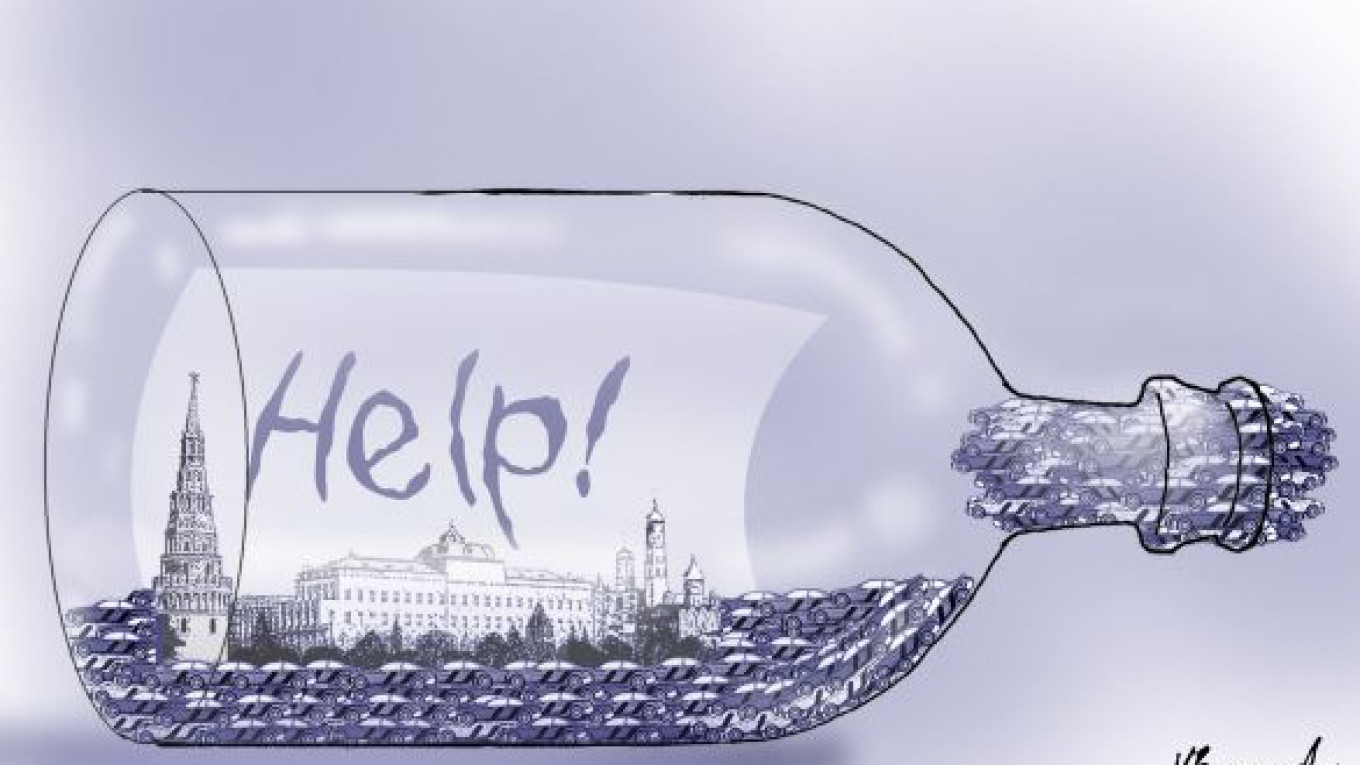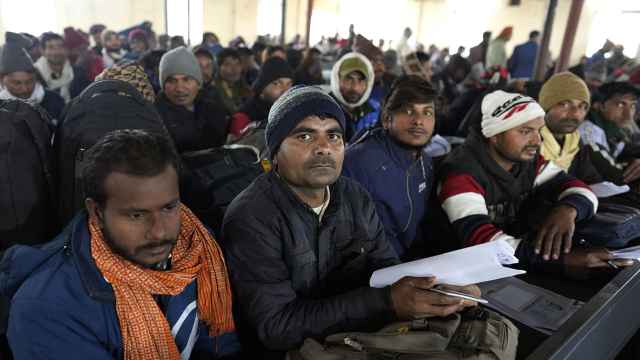Moscow is a rapidly growing megacity rich with a beautiful center, historic architecture, public art, pleasant promenades and urban parks. But Moscow's picturesque city center is plagued by increasing traffic congestion and a rapidly growing periphery. Automobiles, like giant metal cockroaches, swarm through the city. They clog the streets and sidewalks of Moscow's beautiful urban quarters and make it difficult for pedestrians to walk to and around the heart of the city.
One measure of great cities is the mobility that they allow residents and visitors. Think of the wealth of mobility options in London, Paris, Copenhagen and New York with the help of underground subways, buses, trains, trams, bicycle and pedestrian lanes. Great cities offer a robust range of options for safe, reliable and convenient transportation. By contrast, Moscow's legendary congestion is a real irritation for visitors, not to mention residents. Moscow's medieval street system is limited in its capacity to handle traffic and further limited by unwise traffic management policies. Today buses, surface trams, cars and pedestrians are victims of a daily, unbearable gridlock. For most visitors, this is Moscow's most palpable crisis.
Automobile congestion is not limited to within the boundaries of the Moscow Ring Road. Moscow's periphery also lacks infrastructure. The Moscow region is quickly developing scattered, single-use developments that are accessible only by car. Homes are built in one area and shopping in another. Roads are congested, sometimes for kilometers, because there are no other choices for getting around.
Moscow is borrowing the worst two qualities of U.S. urban growth: a lack of attention to the historic core and rapid suburban sprawl. Americans love their cars but have recently learned that automobiles should never be the dominant force in new development. If the automobile dominates decision making, the city will suffer. Americans destroyed many downtowns in favor of suburban development through unwise land use and public finance policies. They demolished block after block of historic districts for parking lots and garages. They severed neighborhoods with highways, ripping the fabric of cities apart with the purpose of moving cars quickly and efficiently. Many traditional downtown main streets are dead. Most retail activity is now in shopping malls accessible only by car.
For centuries, Moscow grew in concentric rings emanating from the Kremlin. With each succeeding generation, new urban quarters were added in a growing overall circular pattern. In the 20th century, these new quarters were connected by metro and surface transit. Most villages and towns surrounding Moscow were built along the rail lines leading into the city center. Before the war, the easiest way to get to Moscow was by train. Roads were primitive and uncomfortable.
The automobile is changing the traditional growth of Moscow by congesting the core and rapidly expanding developed areas of the city in the periphery. Moscow's growth must not repeat the United States' mistakes. A dual strategy is necessary: revitalize old Moscow and develop the new Moscow.
Moscow's residential quarters decline in quality as one travels further from the city center as the aesthetic value of the buildings becomes boring and tedious, even frightening. Massive housing blocks surrounded by formless space lack the ingredients necessary to create inviting neighborhoods. A great challenge for Moscow is how to rehabilitate these massive housing developments and retrofit them with new housing and amenities to improve the quality of life for residents. Each housing precinct requires a unique response and revitalization should be based on a grassroots planning strategy that enlists the active participation of residents to find solutions for the future. This is not an easy task, but it is being done in other European cities with similar types of housing.
Take, for example, the growth of Washington, which long ago expanded beyond the urban boundaries of the center into the neighboring states of Maryland and Virginia. Like Moscow, the economy of Washington required new work places and settlements in the periphery of the city. Washington is now surrounded by a constellation of towns, connected by an ever-expanding network of roads and transit. Jobs are no longer predominantly in the center but are distributed around the region close to residential areas and sometimes integrated into mixed-use centers. This form of growth is necessary and healthy for Moscow. The historic core is far too limited in design and capacity to accommodate excessive growth. Moscow suffers from an imbalance that forces residents to make huge commutes to the center of the city for work. Jobs should be more equitably distributed in the Moscow region to reduce commuter traffic and improve the quality of life.
As Moscow expands, it should avoid building boring suburban developments that are accessible only by automobile. Instead, it should build in areas where transit is planned. Moscow city-planning and zoning authorities should consider all modes of transit including buses, trams, metro, commuter-rail and fast-rail service. They should build a robust network of roads and streets in a grid or spider web pattern to provide options for getting around. Moscow should avoid building more super-blocks districts and should focus on building small blocks that are easy and enjoyable for pedestrians to navigate. Moscow authorities should encourage the development of mixed-use districts that combine homes with offices, shops, restaurants, schools, parks, recreation areas and other services within reasonable walking distances.
Urban designers recognize that one important measure of great cities is the ability to easily move around. Moscow already has the elements of a magnificent historic city. Its city planners would do well to maximize mobility as Moscow continues to grow in the years and decades ahead.
Paul Ostergaard, a participant in the Moscow Urban Forum, is managing principal of Urban Design Associates in Pittsburgh.
A Message from The Moscow Times:
Dear readers,
We are facing unprecedented challenges. Russia's Prosecutor General's Office has designated The Moscow Times as an "undesirable" organization, criminalizing our work and putting our staff at risk of prosecution. This follows our earlier unjust labeling as a "foreign agent."
These actions are direct attempts to silence independent journalism in Russia. The authorities claim our work "discredits the decisions of the Russian leadership." We see things differently: we strive to provide accurate, unbiased reporting on Russia.
We, the journalists of The Moscow Times, refuse to be silenced. But to continue our work, we need your help.
Your support, no matter how small, makes a world of difference. If you can, please support us monthly starting from just $2. It's quick to set up, and every contribution makes a significant impact.
By supporting The Moscow Times, you're defending open, independent journalism in the face of repression. Thank you for standing with us.
Remind me later.






